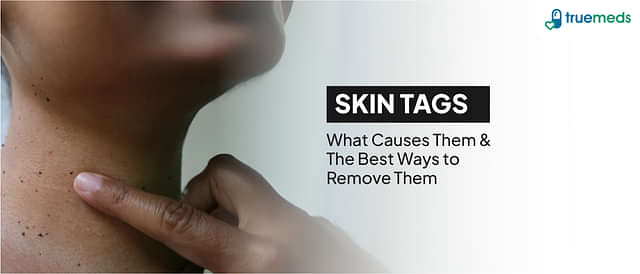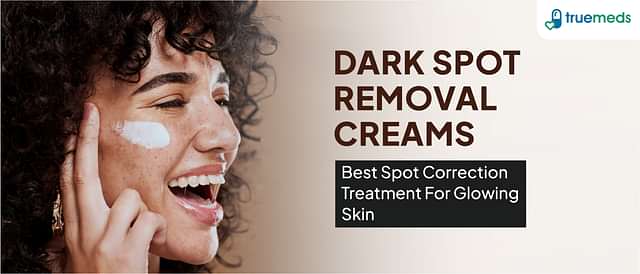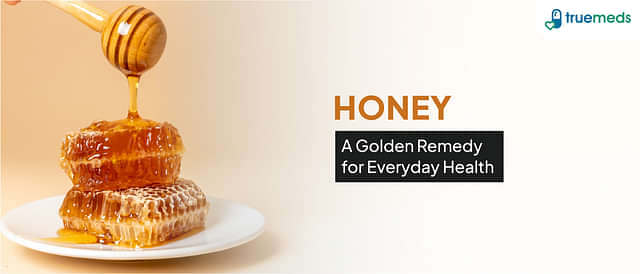Understanding UV Radiation: How It Affects Your Skin and Health
Last updated on : 18 Mar, 2025
Read time : 11 min
The month of July every year is observed as the UV Safety Awareness Month. This is a time when health organisations worldwide work tirelessly to educate the public about the harmful effects of ultraviolet (UV) radiation. The goal is not just to inform but to promote protective measures that can safeguard your skin and overall health.
Why is Understanding About UV Radiation Important?
Beyond age spots and wrinkles, overexposure to UV radiation can lead to severe health issues such as skin cancer, cataracts, and other eye problems. In fact, a single blistering sunburn during childhood can even double your risk of developing melanoma later in life.
Understanding UV radiation is crucial for several reasons, particularly for skin health and cancer prevention. Here’s why:
- Skin Cancer Prevention: Continuous exposure to UV radiation is a significant risk factor for skin cancers, including melanoma, basal cell carcinoma, and squamous cell carcinoma. Understanding how UV rays damage skin cells and lead to cancer-causing mutations can help individuals to take preventive steps.
- Health Benefits and Risks Balance: Despite posing health risks, UV radiation is essential for vitamin D synthesis and crucial for bone health and immune function. It’s important to strike the right balance between obtaining the required sun exposure and avoiding the harmful effects.
- Informed Decision-Making: Awareness about UV radiation empowers individuals to make informed decisions about outdoor activities, sun exposure timing, and protective measures.
What is UV Radiation?
UV radiation, or Ultraviolet radiation, is a type of electromagnetic radiation. It lies between visible light and X-rays on the electromagnetic spectrum and has wavelengths ranging from about 100 to 400 nanometers (nm). Although it is invisible to the human eye, it can cause various effects on living organisms.
What are the Different Types of UV Radiation?
There are three main types of UV radiation and these are classified based on their wavelengths:
- UVA (315-400 nm): UVA rays have the longest wavelengths among the three types. They can penetrate the skin more deeply, reaching the dermis or the second layer of your skin. They are primarily associated with skin ageing and the development of wrinkles. Exposure to UVA can contribute to skin cancer and these rays are often present even on cloudy days.
- UVB (280-315 nm): UVB rays have shorter wavelengths and are more intense than UVA rays. They primarily affect the outer layer of your skin (epidermis). Their intensity varies with season and time of day, peaking between 10 a.m. to 4 p.m. UVB rays are responsible for sunburn and play a significant role in the development of skin cancers, including melanoma.
- UVC (100-280 nm): UVC rays have the shortest wavelengths and are considered the most harmful form of UV radiation. Thankfully, they are completely absorbed by the Earth’s ozone layer and do not reach the surface. UVC radiation can also be produced artificially by devices like germicidal lamps.
What Are the Common Sources of UV Radiation?
UV radiation comes from different sources, both natural and artificial:
1. Natural Sources
The primary source of UV radiation is our sun. It emits a continuous spectrum of UV radiation. The amount of UV radiation that reaches the Earth’s surface depends on factors such as the time of year, geographic location, and atmospheric conditions.
2. Artificial Sources
These include:
- Tanning Beds: These devices emit both UVA and UVB radiation. Greater the exposure, greater the risk of skin cancer.
- Industrial Sources: Industrial processes, like arc welding, can produce high levels of UV radiation. This can pose risks to workers who are exposed to it.
- Fluorescent and Halogen Lamps: Certain types of artificial lighting can emit low levels of UV radiation. However, this is generally not significant compared to sunlight
Knowledge about the types and sources of UV radiation is crucial in devising effective protection strategies. With this understanding, we can minimise the health risks associated with UV radiation exposure.
How does UV Radiation Affect the Skin?
The way UV radiation affects the skin is complex and multifaceted, and understanding these effects is crucial for maintaining skin health and preventing damage. Let’s look at the various beneficial and harmful effects in detail.
What are the Beneficial Effects of UV Radiation?
UV radiation is not all bad. In fact, it has some important benefits for our health:
- Vitamin D Production: Exposure to sunlight, and specifically UVB radiation, triggers the production of vitamin D in our skin. This ‘sunshine vitamin’ is crucial for maintaining healthy bones and teeth, supporting the immune system, and regulating insulin levels. If you’re not getting enough sunlight – perhaps because you’re indoors a lot or live in a region with limited sunshine – maintaining adequate vitamin D levels can become challenging.
- Mood Enhancement: UV radiation can also have positive effects on our mood. When we’re exposed to sunlight, our bodies produce more of a hormone called serotonin. This hormone helps us feel calm and focused, boosts our mood, and contributes to a feeling of well-being.
What are the Disadvantages of UV Radiation?
While moderate exposure to UV radiation has benefits, overexposure can lead to several negative health consequences:
- Skin Damage: Over-exposure to UV radiation can cause sunburn and other types of skin damage. Prolonged exposure can also lead to premature ageing, including wrinkles, loss of elasticity, and age spots.
- Skin Cancer: The most serious concern surrounding UV exposure is its link to skin cancer. Both melanoma (the deadliest form of skin cancer) and non-melanoma skin cancers are significantly associated with exposure to UV radiation.
- Immune System Suppression: There’s evidence suggesting that excessive sun exposure and high levels of chronic UV radiation exposure can suppress the normal function of the immune system.
- Eye Damage: Your skin isn’t the only thing that can be damaged by UV radiation. Overexposure can also lead to conditions such as cataracts and photokeratitis, sometimes referred to as ‘snow blindness.’
While UV radiation has beneficial effects such as promoting vitamin D production and enhancing mood, excessive exposure poses significant risks. It’s therefore essential to balance sun exposure with protective measures, such as wearing sunscreen and protective clothing, to mitigate these risks.
| Did you know that the ozone layer protects us from harmful UV rays? Our ozone layer acts as a protective shield against the majority of the sun’s harmful UV radiation. Located in the stratosphere, about 15 to 35 kilometres above the Earth’s surface, it absorbs and filters out over 90% of incoming UV radiation.The ozone layer absorbs most of UVB and all of UVC radiation. Without our ozone layer, life on Earth would be exposed to dangerously high levels of UV radiation. The layer is currently recovering from a decades-long thinning trend due to ozone-depleting substances, thanks to worldwide action under the Montreal Protocol. |
How can you protect yourself effectively from UV radiation?
UV radiation can have serious effects on the skin and prolonged exposure can lead to serious effects. So, how can you protect your skin from UV radiation? Here are some tried-and-true strategies:
- Use Sunscreen: Choose a broad-spectrum sunscreen with at least SPF 30 and apply it generously to all exposed areas of the skin. Don’t forget often-missed areas such as ears, neck, and tops of feet. Remember to reapply sunscreen every two hours and more frequently if you’re swimming or sweating.
- Wear Protective Clothing: Invest in clothing that covers your arms and legs. Opt for tightly woven fabrics and darker colours as they offer better protection against UV rays. Additionally, look for garments labelled with a UV Protection Factor (UPF) – the higher the UPF, the better the protection provided.
- Seek Shade: Stay in the shade, if possible, especially during peak hours from 10 a.m. to 4 p.m. Remember, UV rays can still reach you even in the shade. So combining shade with other protective measures is advisable.
- Wear a Wide-Brimmed Hat: A hat with a brim of at least 2-3 inches can protect your face, ears, and neck from direct sunlight. The fabric should be tightly woven for maximum protection.
- Use Sunglasses: Choose sunglasses that block 99% to 100% of UVA and UVB rays. Wrap-around styles provide additional protection for the skin around your eyes.
- Avoid Tanning Beds: Tanning beds emit harmful UV radiation which increases the risk of skin cancer. tt’s best to avoid them altogether.
- Be Mindful of Reflective Surfaces: Surfaces such as water, sand, and snow reflect UV rays, increasing your exposure. Take extra precautions when engaging in activities near these surfaces.
By embracing these preventive measures, you can effectively protect your skin from the harmful effects of UV radiation.
UV Radiation Myths and Facts
Despite numerous awareness campaigns, several myths about UV radiation persist. Let’s bust a few of them:
Myth 1: You don’t need to worry about UV radiation on cloudy days.
Fact: Up to 90% of UV rays can penetrate clouds. Therefore, you can still get sunburned even when it’s overcast. UV radiation is present year-round, so it’s crucial to protect your skin regardless of the weather.
Myth 2: Darker skin doesn’t need sun protection.
Fact: While it’s true that people with darker skin have more melanin providing some natural protection. However, they are still at risk for UV damage and skin cancer. UV radiation can affect all skin types, hence protective measures are necessary for everyone.
Myth 3: A base tan protects your skin.
Fact: There is no such thing as a safe tan. A tan indicates skin damage from UV exposure which increases the risk of skin cancer.
Myth 4: Sunscreen is only necessary at the beach or pool.
Fact: UV rays can cause damage in various environments, including urban areas and indoors near windows. Apply sunscreen daily, regardless of your location or activities.
Myth 5: You don’t need sunscreen if your makeup contains SPF.
Fact: While some cosmetics offer SPF protection, they often do not provide sufficient coverage for all exposed skin. It is advisable to apply a broad-spectrum sunscreen underneath makeup for adequate protection.
Understanding the impact of UV radiation on our skin and health is crucial for effective sun protection. Debunking common myths and adopting practical protective measures, such as using a broad-spectrum sunscreen with at least SPF 30, wearing protective clothing, seeking shade, and being mindful of UV exposure year-round, can significantly reduce your risk of skin damage. By doing so, you can enjoy the benefits of sunlight, such as vitamin D production, while keeping your skin healthy and protected. Stay sun-smart!
FAQs
UV or Ultraviolet radiation is a type of energy produced by the sun and some artificial sources, like tanning beds. It is invisible to the human eye.
UV radiation damages the skin cells, causing sunburn, premature ageing, and increasing the risk of skin cancer.
There are three types of UV radiation: UVA, UVB and UVC. UVA and UVB reach Earth’s surface and affect our skin while UVC is absorbed by the atmosphere.
Yes, moderate exposure to UV radiation helps the body produce vitamin D, which is essential for bone health.
Excessive UV radiation exposure can cause skin damage, eye damage, immune system suppression, and skin cancer.
You can shield yourself from UV radiation by avoiding the midday sun, wearing sun-protective clothing, applying sunscreen, and wearing sunglasses.
No, the UV radiation from tanning beds is not safer; it can cause similar skin and eye damage as the sun’s rays.
The UV Index predicts the level of solar UV radiation. It helps you understand when you need to take precautions to protect your skin from harmful rays.
Disclaimer
Our healthcare experts have carefully reviewed and compiled the information presented here to ensure accuracy and trustworthiness. It is important to note that this information serves as a general overview of the topic and is for informational purposes only. It is not intended to diagnose, prevent, or cure any health problem. This page does not establish a doctor-patient relationship, nor does it replace the advice or consultation of a registered medical practitioner. We recommend seeking guidance from your registered medical practitioner for any questions or concerns regarding your medical condition.
Popular Articles
Recommended Articles
Recent Articles
Top-Selling Medicines:
...View more
Top-Selling OTC:
...View more
Company
About UsHealth ArticleHealth StoriesDiseases & Health ConditionsAll MedicinesAll BrandsNeed HelpFAQSubscribe
Registered Office Address
Grievance Officer
Download Truemeds

Contact Us
Our customer representative team is available 7 days a week from 9 am - 9 pm.
v3.7.12
Our Payment Partners



























































